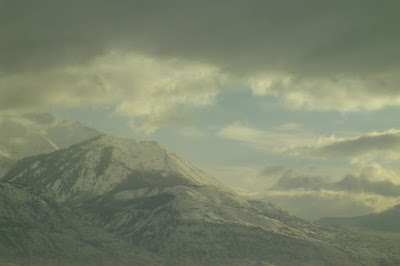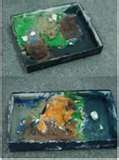 See other SkyWatch Friday views:
See other SkyWatch Friday views:http://skyley.blogspot.com/
 It was a dark and gloomy winter morning.....
It was a dark and gloomy winter morning..... With my head in the stars, AND my feet on the ground.................................................."GEOGRAPHY TAKES YOU PLACES!" "Geo-Terrific" geography resources for busy teachers!!
 See other SkyWatch Friday views:
See other SkyWatch Friday views: It was a dark and gloomy winter morning.....
It was a dark and gloomy winter morning..... 
This video was available for download today 2/24/09 on MSN.com...great segment from the History Channel about the geography & history of pre-Lent world celebrations.
 Speaking of clay...I've had students build a cross-section model of the earth's inner layers in conjuction with the story: How To Dig A Hole To The Other Side Of The World, by Faith McNulty.
Speaking of clay...I've had students build a cross-section model of the earth's inner layers in conjuction with the story: How To Dig A Hole To The Other Side Of The World, by Faith McNulty. 
I found a few more lesson plans (with lots of extensions) that relate to teaching about the inner layers of the earth. These lessons also use: "How To Dig a Hole to the Other Side of the World."
http://www.usmint.gov/kids/teachers/lessonPlans/50sq/2005/0406-3.rtf
http://www.thesolutionsite.com/lesson/1206/watsonelB1.html
http://www.nku.edu/~enved/services.htm
Realistically, we could not dig to the other side of the earth....but if we could? The following fun websites below will show you where you would exit (antipode locations) ...if you could dig to the other side of the world!!!!!
http://www.freemaptools.com/tunnel-to-other-side-of-the-earth.htmhttp://www.antipodemap.com/
 See what others are
See what others are
Sharing a cool video I found showing the 2007 Annual Latern Festival in Pingshi, Taiwan... for more information about lantern festivals:
http://www.chinavoc.com/festivals/lantern.htm
http://www.seasite.niu.edu/Tagalog/Cynthia/festivals/giant_lanterns.htm
 Students of all ages enjoy using clay for art projects, but try using it for geography projects as well! Using clay is a great way for students to learn vocabulary/tearms of physical geography features. For this project, send the following clay recipe home with students a couple of weeks prior to the activity date...ask them to make three batches of clay if possible in different colors: blue, green, & white (plain/no color). This recipe is one of the best that I have used for clay projects, because it's 1)fairly easy to make, 2) can be repeatedly re-used for different projects (if stored in plastic zip-bags or containers), and 3)projects made from this clay dry slowly, hold together for quite a while (and do not crack/fall apart).
Students of all ages enjoy using clay for art projects, but try using it for geography projects as well! Using clay is a great way for students to learn vocabulary/tearms of physical geography features. For this project, send the following clay recipe home with students a couple of weeks prior to the activity date...ask them to make three batches of clay if possible in different colors: blue, green, & white (plain/no color). This recipe is one of the best that I have used for clay projects, because it's 1)fairly easy to make, 2) can be repeatedly re-used for different projects (if stored in plastic zip-bags or containers), and 3)projects made from this clay dry slowly, hold together for quite a while (and do not crack/fall apart). See what others are seeing when
See what others are seeing when Birds of a feather,
Birds of a feather,
 For latest reports of geologic hazards & earthquakes in the U.S./World see United States Geological Society http://earthquake.usgs.gov/. Free teacher information available: podcasts, newsletters, online lectures, GIS/GPS information, maps, videos, publications, career information,
For latest reports of geologic hazards & earthquakes in the U.S./World see United States Geological Society http://earthquake.usgs.gov/. Free teacher information available: podcasts, newsletters, online lectures, GIS/GPS information, maps, videos, publications, career information,